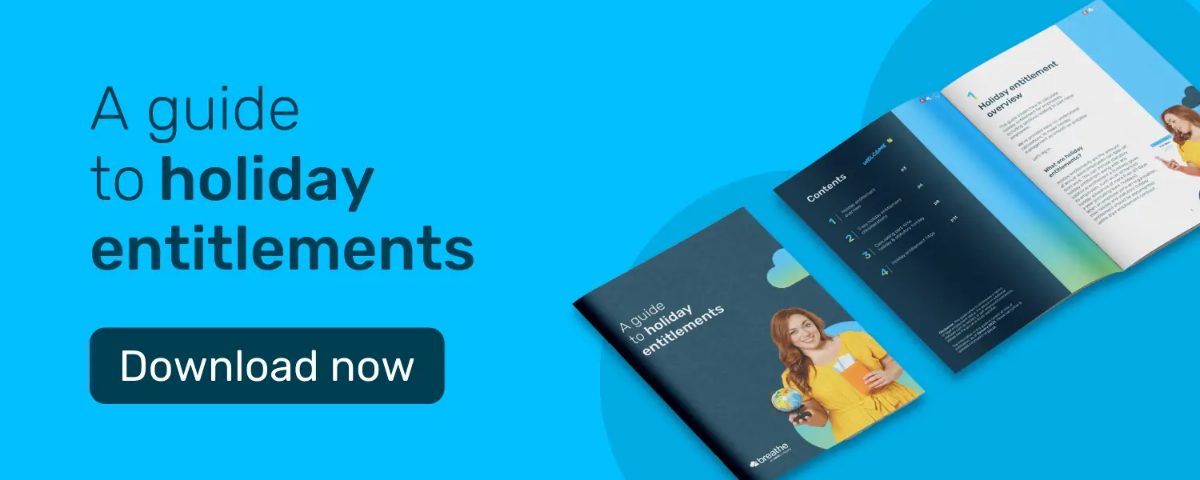Getting your annual leave policy right is important, not just for your staff but for your business as well in order to avoid a lot of headaches. Holidays are important for your staff to give them a break, allow them to recharge their batteries so they come back energised and ready to work hard on your business. A generous holiday policy can be an attractive benefit when recruiting.
But it’s also important you manage holiday effectively so the business is not left short-staffed during busy periods, employees are not disgruntled because they’re missing out.
Working out how much accrued leave they have is part of that equation to make sure everyone gets what is fairly owed to them.
What is accrued leave?
Holiday accrues throughout the year for existing employees - they will accrue a
When a new employee joins your company their statutory entitlement to holiday automatically starts to build, or accrue. Holiday accrues even during probationary periods, and during periods of sick leave or maternity, paternity or adoption leave.
Over the course or a year, a full-time employee will be entitled to 5.6 weeks holiday a year. Part-time members will be entitled to 5.6 weeks as well, but this will be at a pro rata rate depending on how many days they work.
You multiply 5.6 by the number of days they work to get the amount of holiday owed. For full-time this would be 28 days, for someone working three days a week this would be 16.8 days (rounded up to the nearest half day, so 17).
Lots of employers use an accrual system to calculate how much an employee is owed in their first year working for them.
How can annual leave accrual be calculated?
Annual leave accrual can be calculated by examining how far through the company holiday year you are, and how much leave entitlement the employee has.
Annual leave is accrued throughout the year at one twelfth of entitlement per month, but if an employee starts partway through your company leave year, then they will be entitled to holiday from that point onwards.
For example, if someone started on 1st July (and their company holiday year ran from January to December), the employee would be entitled to half their statutory leave entitlement - so 14 days out of a 28-day holiday allowance.
Similarly, if an employee leaves six months through the company's leave year, they will only be entitled to holiday accrued up to that point.
Should employees only take holiday they have accrued?
Legally, there is nothing to stop you from enforcing a rule where employees are only allowed to take holiday they have accrued. In practice, this would mean staff simply wouldn’t be able to take much time off in the first few months of the year. From a staff relations point of view, this could also be disastrous.
It’s more common with new employees to enforce an accrual system where they can only take holiday as they become entitled to it. However, certainly with permanent and long-term employees, allowing them to take their leave when they want is the normal practice.
You can always stipulate periods during the year when your business is busy, and when leave can’t be taken. Similarly, you can include periods of time when leave must be taken, for example, if you close over the Christmas period.
If an employee leaves part-way through the year and they have taken more holiday than they are entitled to at that point, then you can require them to pay back that holiday by taking money from their final pay. However, this can only be done if agreed in advance (and in writing).
If you're finding calculating holiday tricky - we've got you covered. Our free guide to holiday entitlements was written for SMEs - why not download & have a read today?
.webp)
Author: Sarah Benstead
Sarah is a Product Marketing Specialist here at Breathe. Always innovating, she loves writing about product releases in an engaging & informative way. When she's not coming up with new ideas, she enjoys long walks with her dog, Clifford.
.webp)




.webp)
